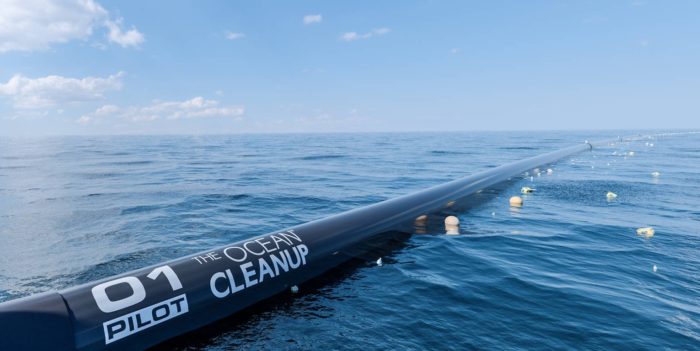The Ocean Cleanup announced that it has the ‘go’ to continue its journey to the the Great Pacific Garbage Patch and start cleaning plastics, after two weeks of tests in the Pacific.
The trials showed that U-shape installation attained sufficient speed through water, something that means that it can move faster than the plastics, thus being able to capture it. What is more, it will be able to reorient if wind and wave direction change, keeping a steady state.
[smlsubform prepend=”GET THE SAFETY4SEA IN YOUR INBOX!” showname=false emailtxt=”” emailholder=”Enter your email address” showsubmit=true submittxt=”Submit” jsthanks=false thankyou=”Thank you for subscribing to our mailing list”]
Another important conclusion is the fact that the system did not sustain any significant damage and is now able to proceed to the Great Pacific Garbage Patch.
Maersk Launcher will now tow the System 001 into the Pacific to begin the big cleanup operation.
System 001 consists of a 600-meter-long (2000 ft) U-shaped floating barrier with a three-meter (10 ft) skirt attached below. The system is designed to be propelled by wind and waves, allowing it to passively catch and concentrate plastic debris in front of it. Due to its shape, the debris will be funneled to the center of the system. Moving slightly faster than the plastic, the system will act like a giant Pac-Man, skimming the surface of the ocean.
The Ocean Cleanup anticipates that the first plastic will be collected and returned to land within 6 months after deployment. This will mark the first time that free floating plastic will have been successfully collected at sea. After returning the plastic to land, The Ocean Cleanup plans to recycle the material into products and use the proceeds to help fund the cleanup operations.






























































